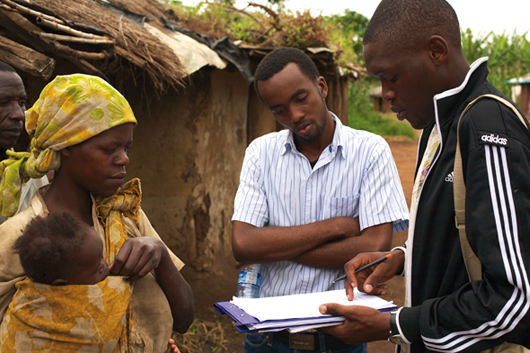Local Data Underpins Tanzania’s Next Malaria Plan
 Malaria Survey-Image Credit-Roll Back MalariaTanzania’s health ministry is set to revisit the way it goes about collecting data to control malaria following new insights into the disease. The ministry is preparing to sign a strategic plan that will focus more on data collection at village and district level to intensify the national fight against malaria. This revision is needed because changing temperatures and growing travel habits among Tanzania’s people are spreading malaria-bearing mosquitoes, say policymakers.
Malaria Survey-Image Credit-Roll Back MalariaTanzania’s health ministry is set to revisit the way it goes about collecting data to control malaria following new insights into the disease. The ministry is preparing to sign a strategic plan that will focus more on data collection at village and district level to intensify the national fight against malaria. This revision is needed because changing temperatures and growing travel habits among Tanzania’s people are spreading malaria-bearing mosquitoes, say policymakers.
In addition, recent research revealed that existing anti-malaria methods in Tanzania, such as mosquito net distribution, do not always reach the people most in need because of a lack of knowledge about local disease hotspots. In Tanzania, annual deaths from malaria are estimated at around 60,000, with 80 per cent of these children under five. The ministry’s new plan is meant to get the country on the path to malaria eradication, says Renata Mandike, the deputy director of Tanzania’s National Malaria Control Programme.
“Change of climate together with extensive movement of people complicated the fight as mosquitoes are now found in places previously free of malaria infection,” Mandike says. “The complexity of the disease can even be noticed within a small geographical area like a village where one part might be comparatively more affected than the other.”
As part of the strategy, the Tanzanian government will use satellite data to monitor disease spread and collect information about the success of malaria control programmes at the local level. Previous action plans were based on regional data, but this has not been detailed enough to develop effective containment strategies, Mandike says.
Government insiders say the new strategy is based on extensive research work, especially around how the disease spreads. It will emphasise immediate and timely treatment of malaria patients by improving the availability of drugs, and ensuring that mosquito nets are more evenly distributed in malaria hotspots, SciDev.Net was told.
This is particularly important as Tanzania has recently struggled to maintain momentum in malaria containment. From 2008 to 2011, prevalence of malaria in under fives dropped from 18 per cent to 10 per cent, but little progress has been made since, according to the country’s existing malaria operational plan.
Brown Metilinye, a health activist from the Afya Bora Consortium, a nongovernmental organisation lobbying for better healthcare, says that too many people are still being admitted to hospitals in disease hotspots, even though recent data shows progress in controlling the spread of malaria in Tanzania. The new strategy was made available to government supervisors in August to undergo final consultation and gather the necessary money, before it is ready to be signed and implemented. “I can’t give you details of expenses now, but I assure that the government will allocate funds once the plan is ratified,” says Mandike.
Tanzania’s first malaria eradication programme, which ran from 2005-10, cost US$1.2 billion.
This article was originally published on SciDev.Net. Read the original article.
- Login to post comments